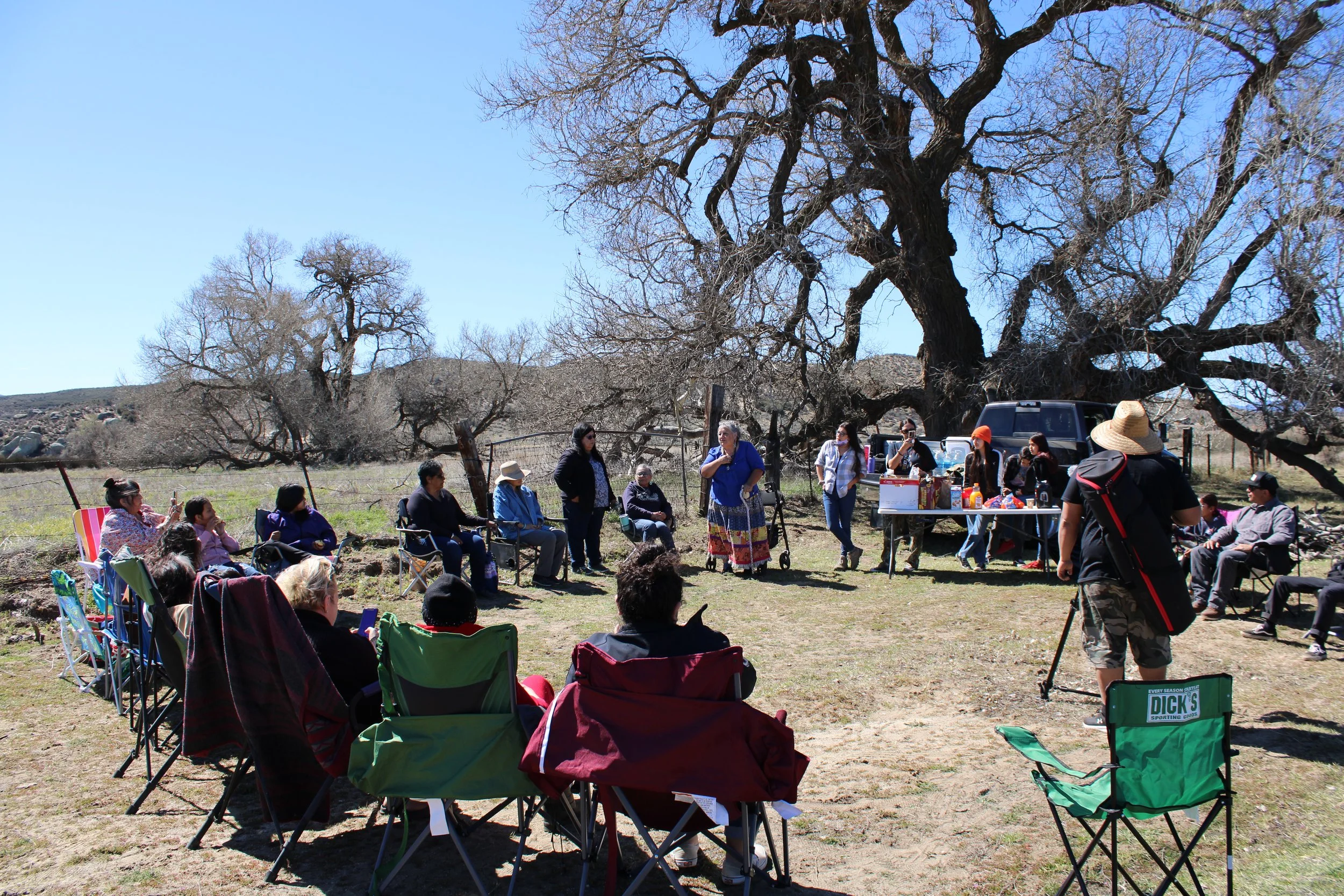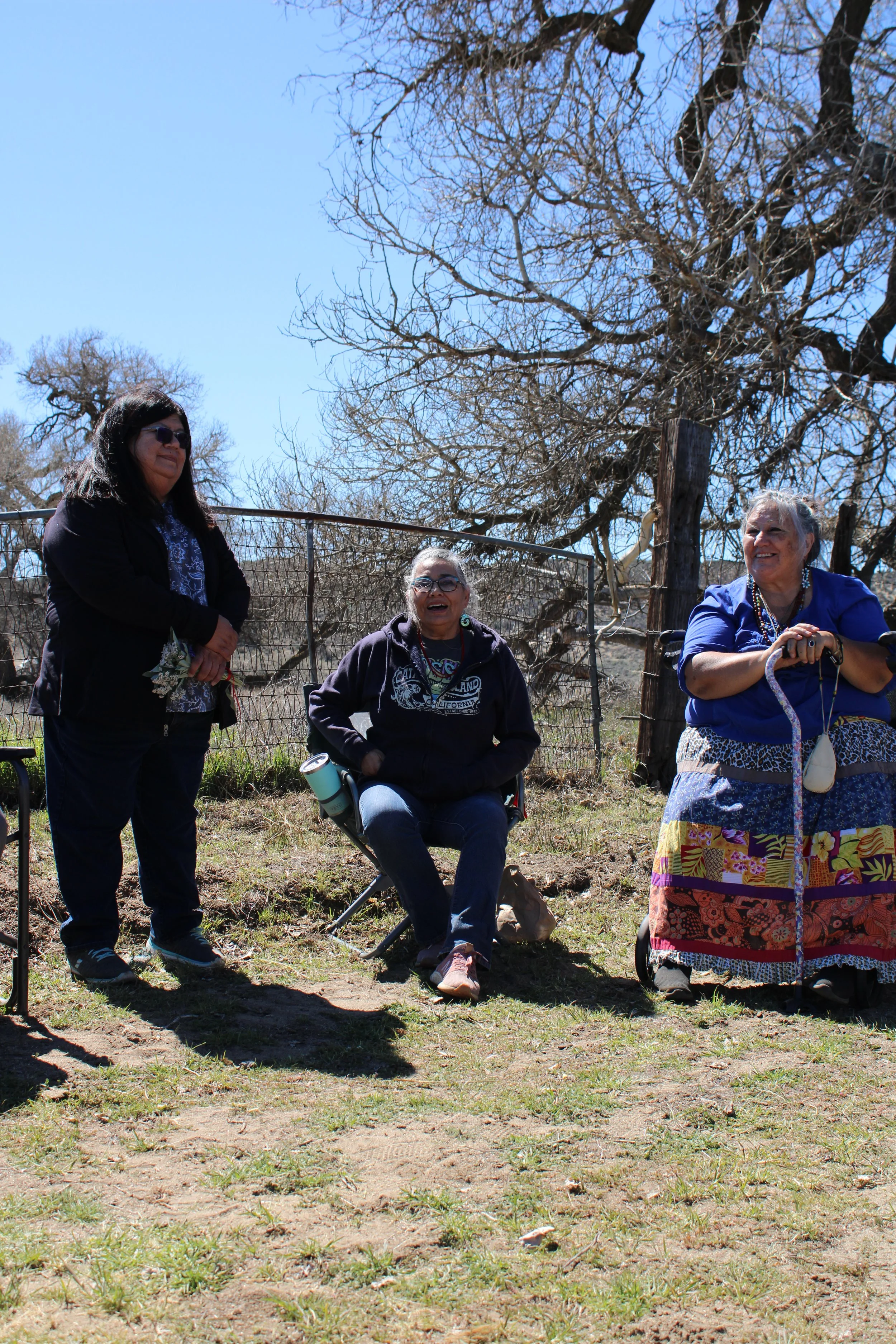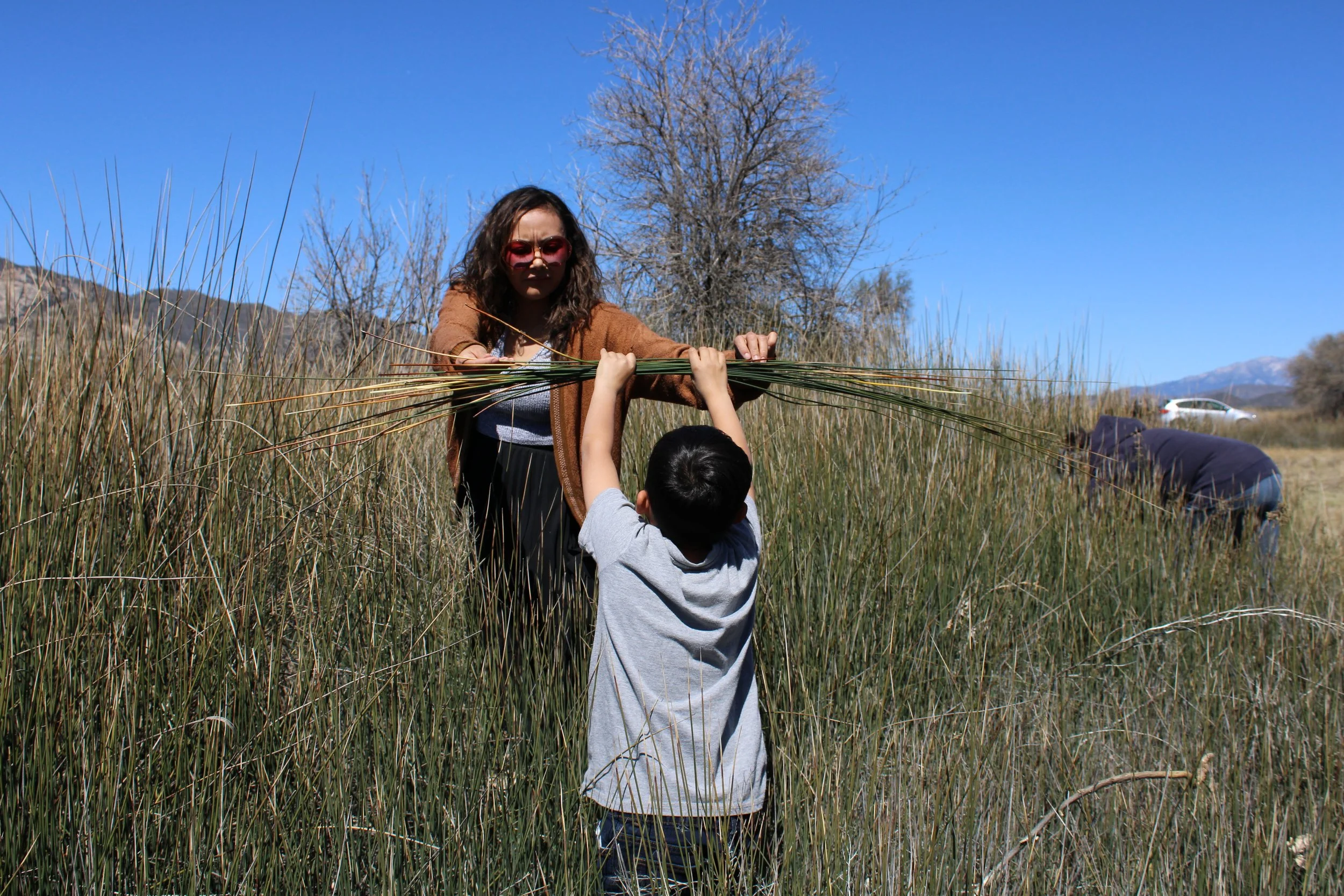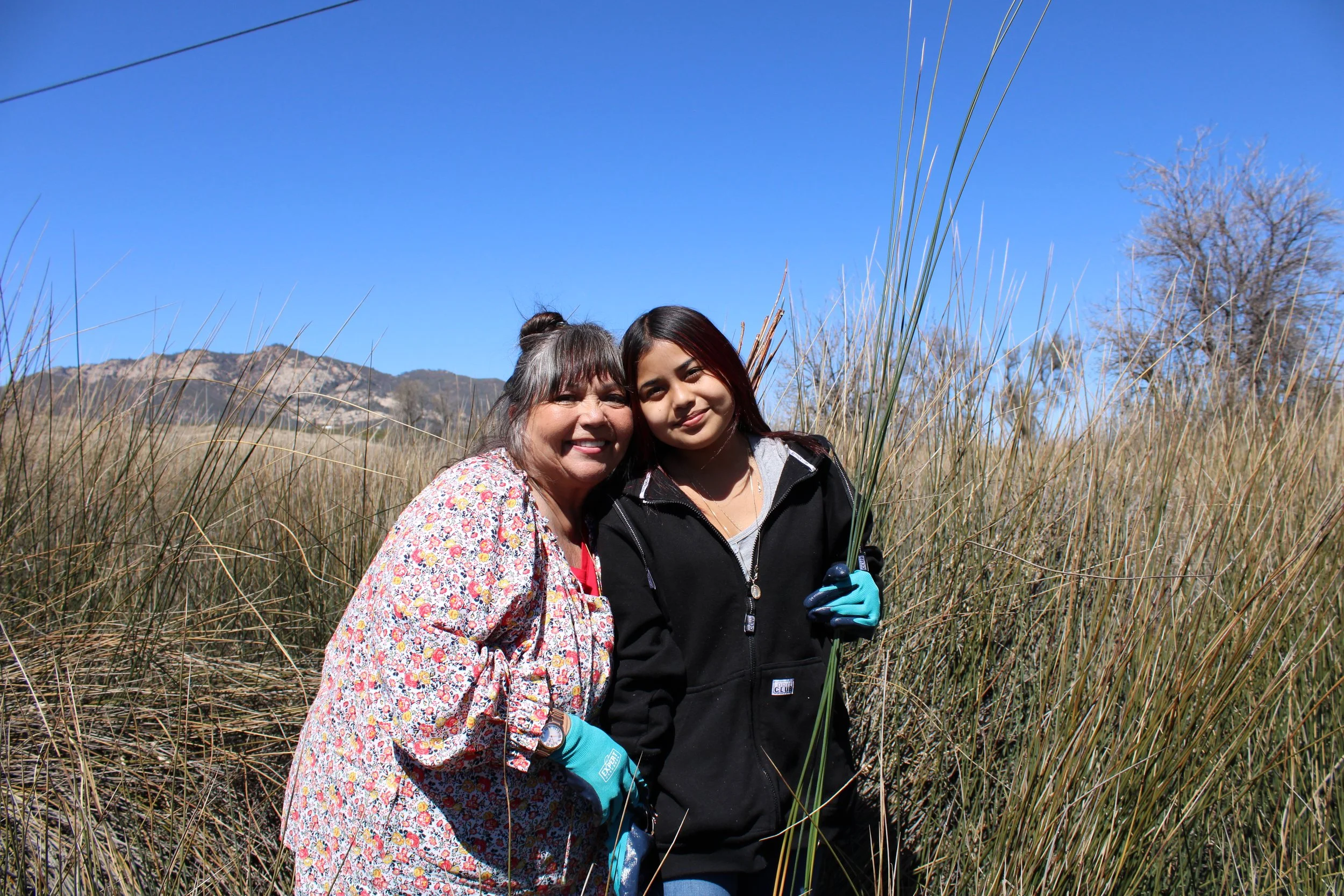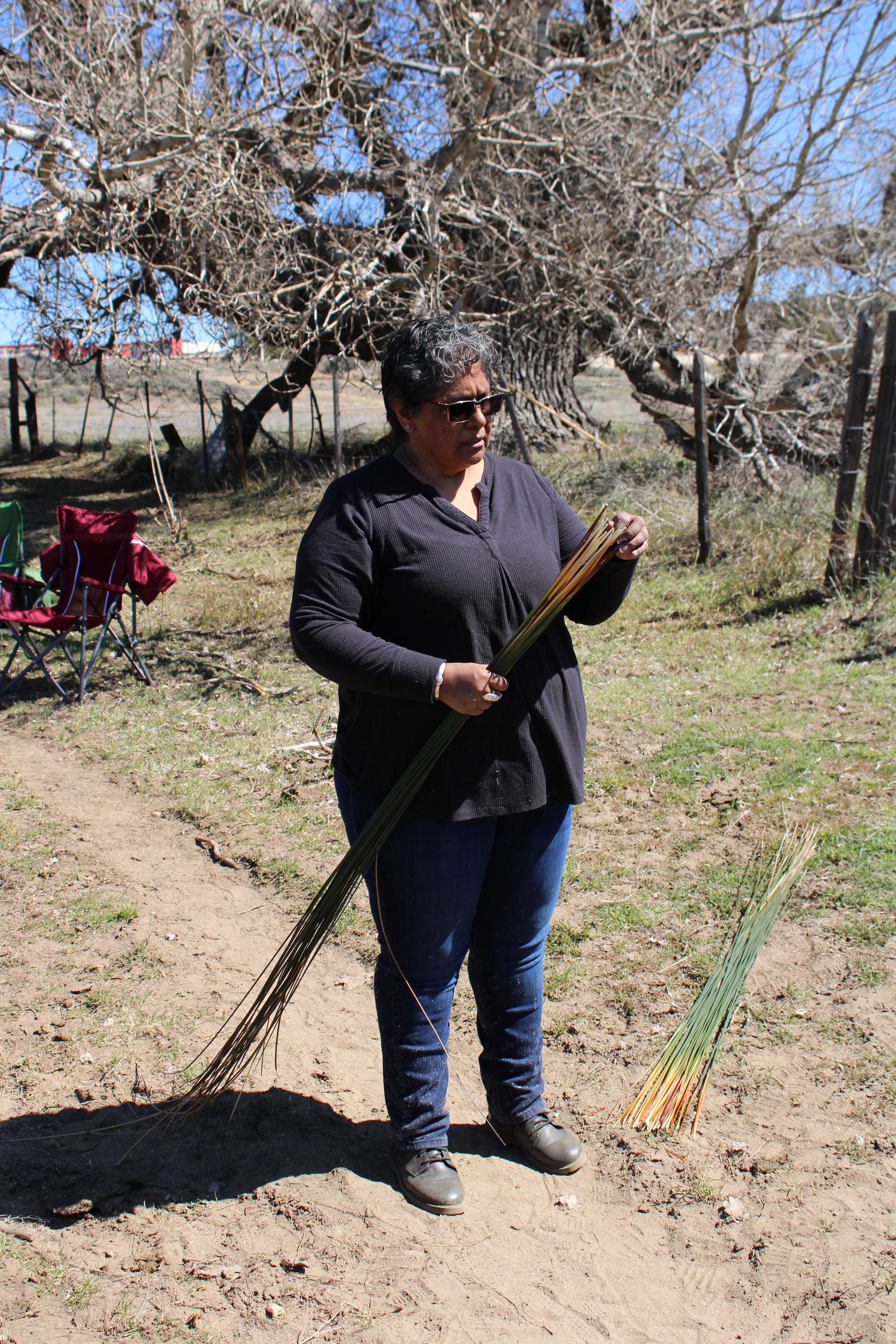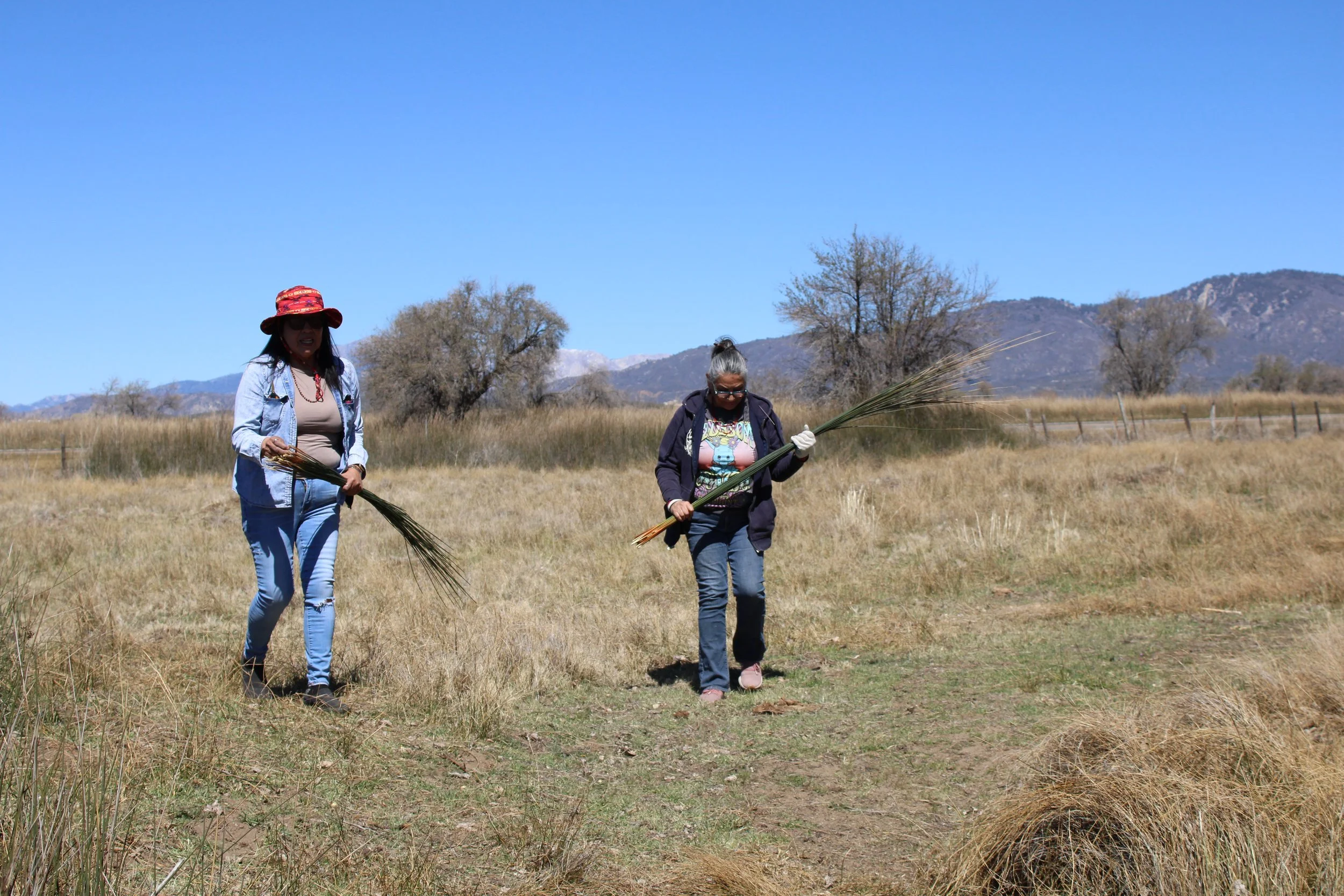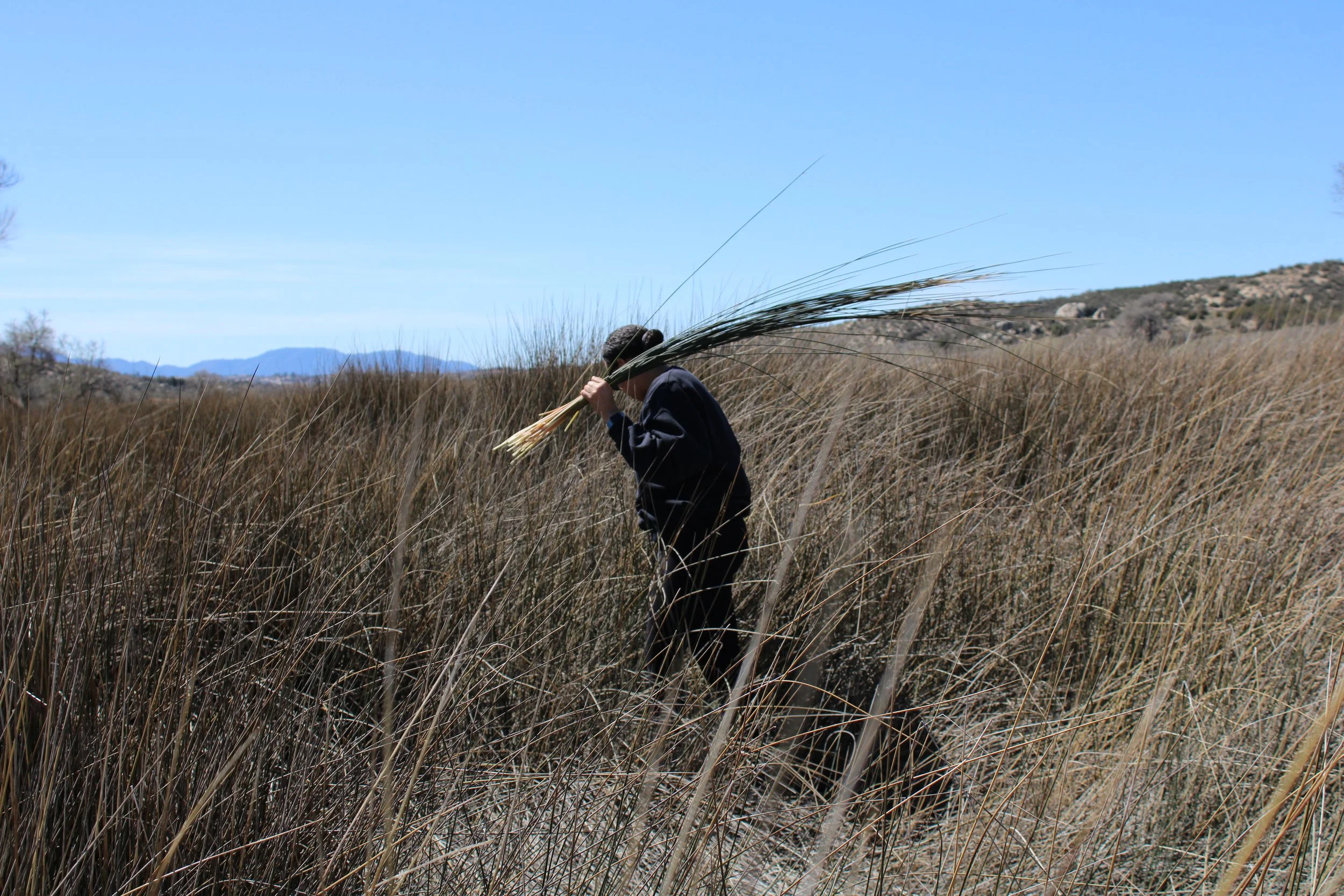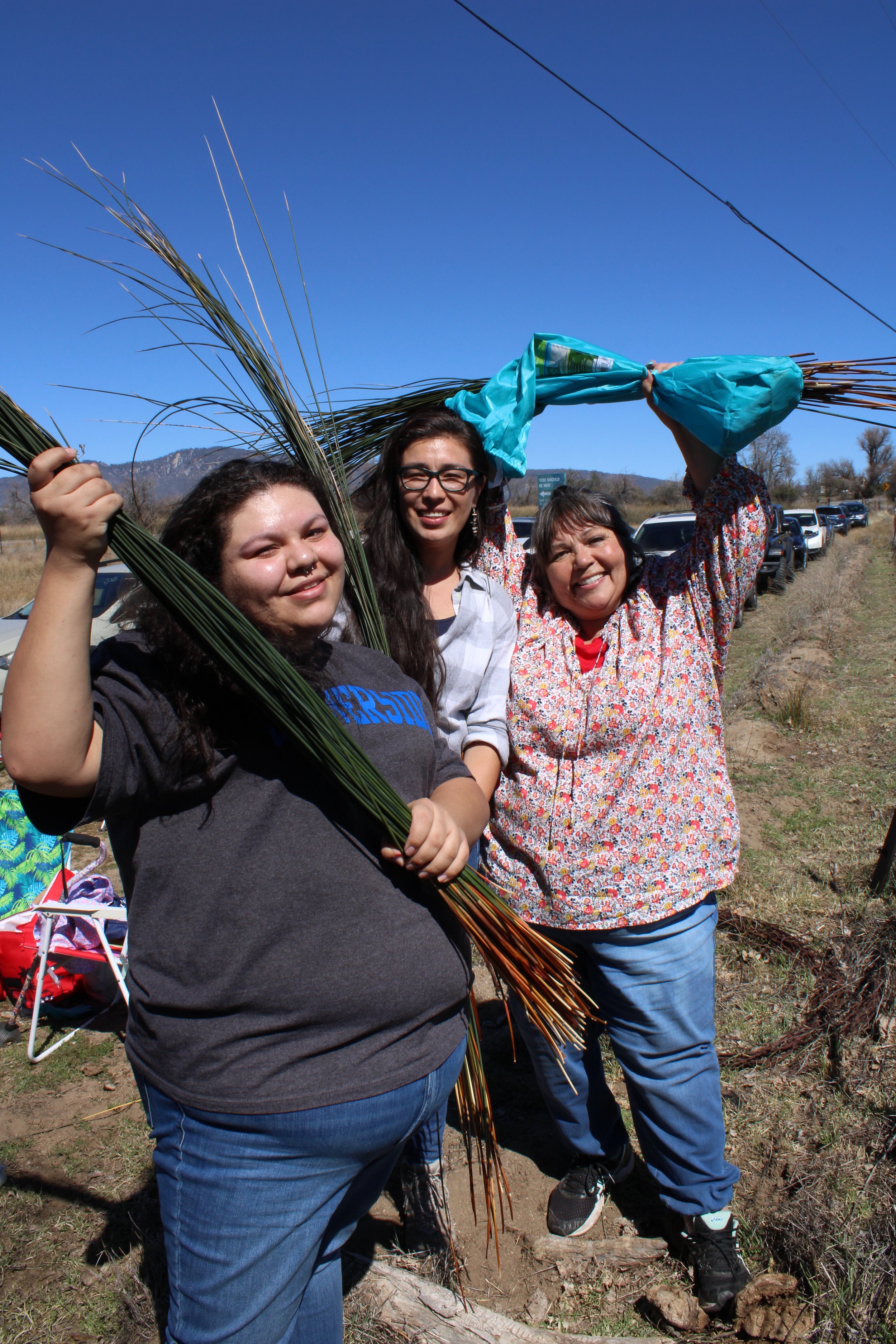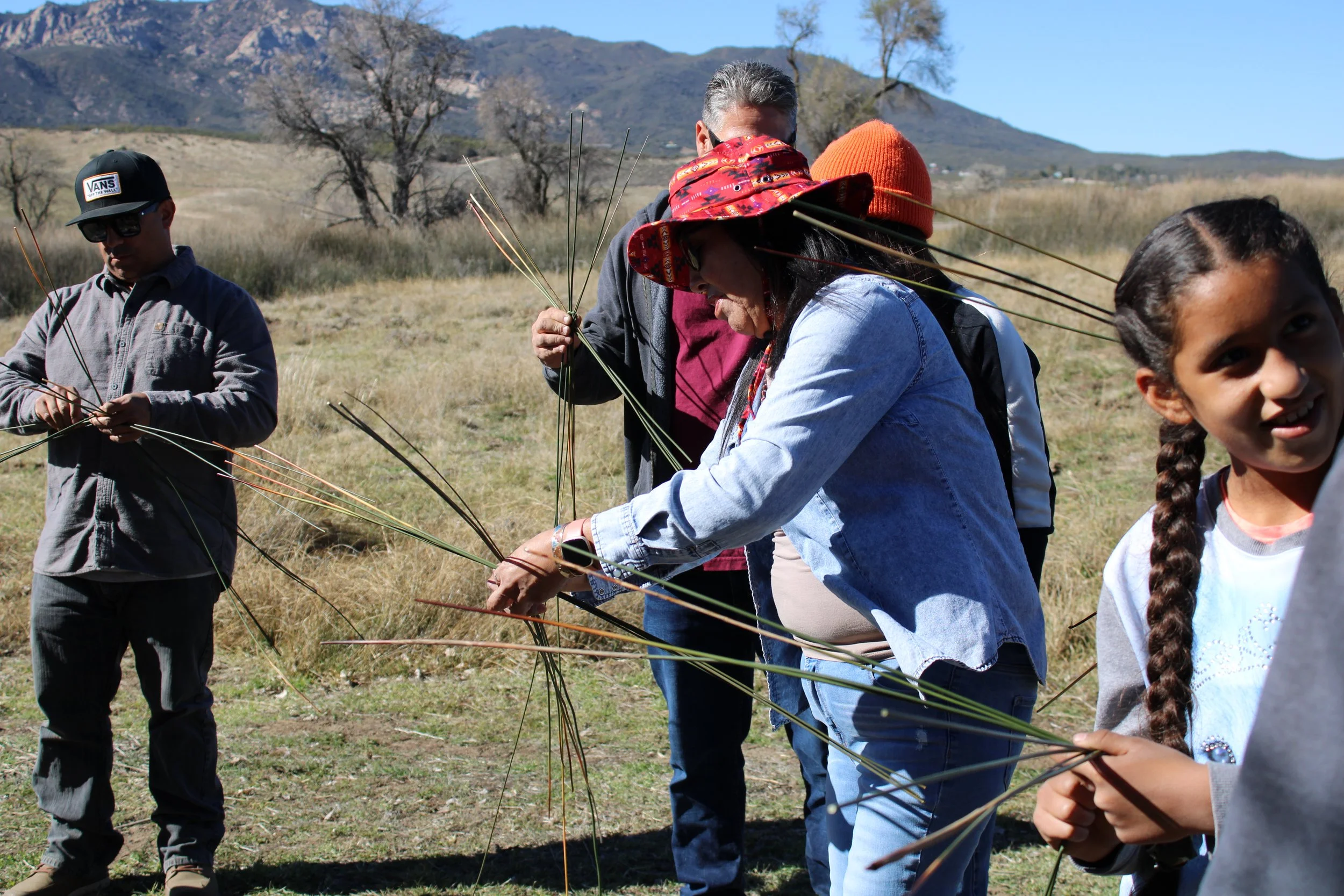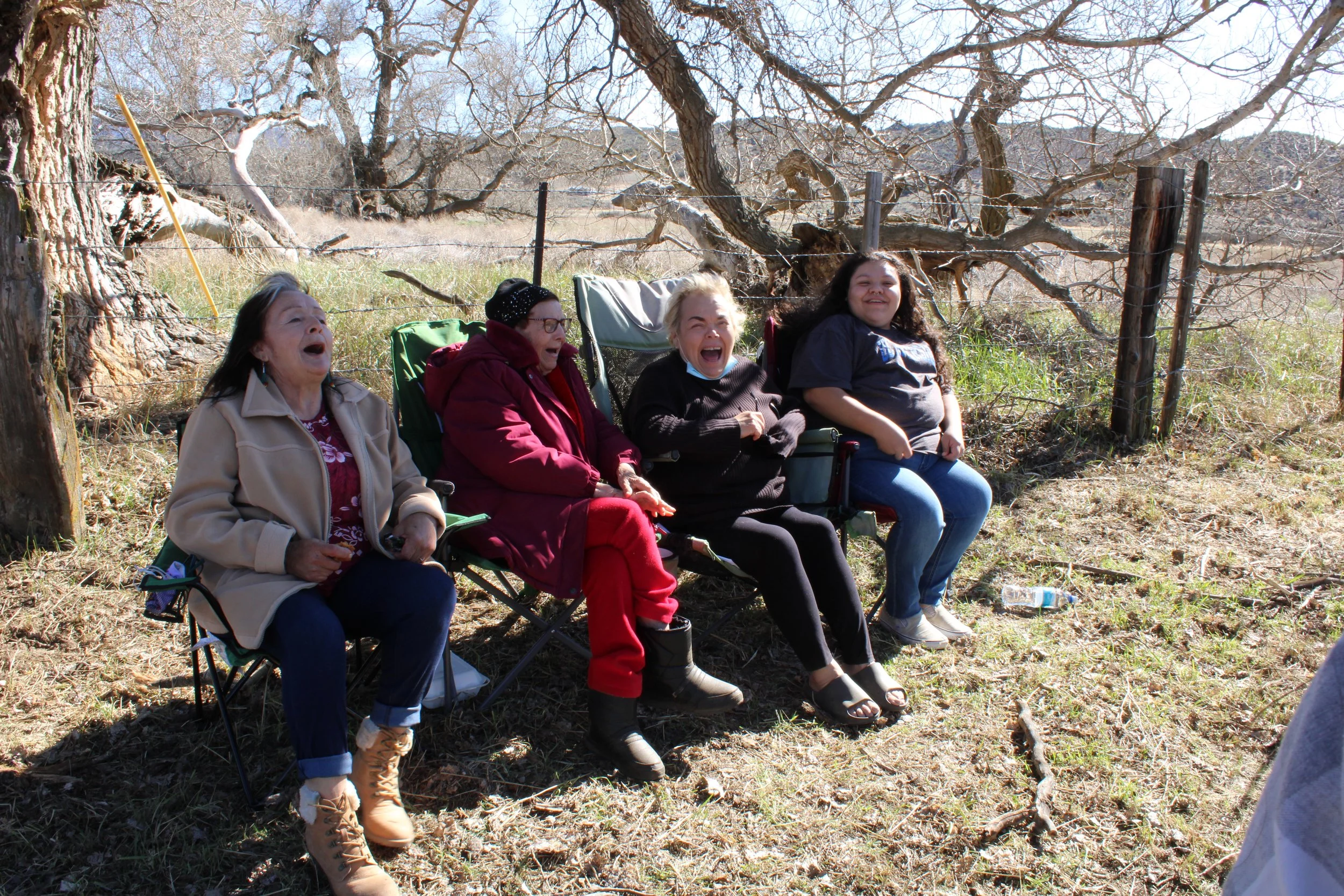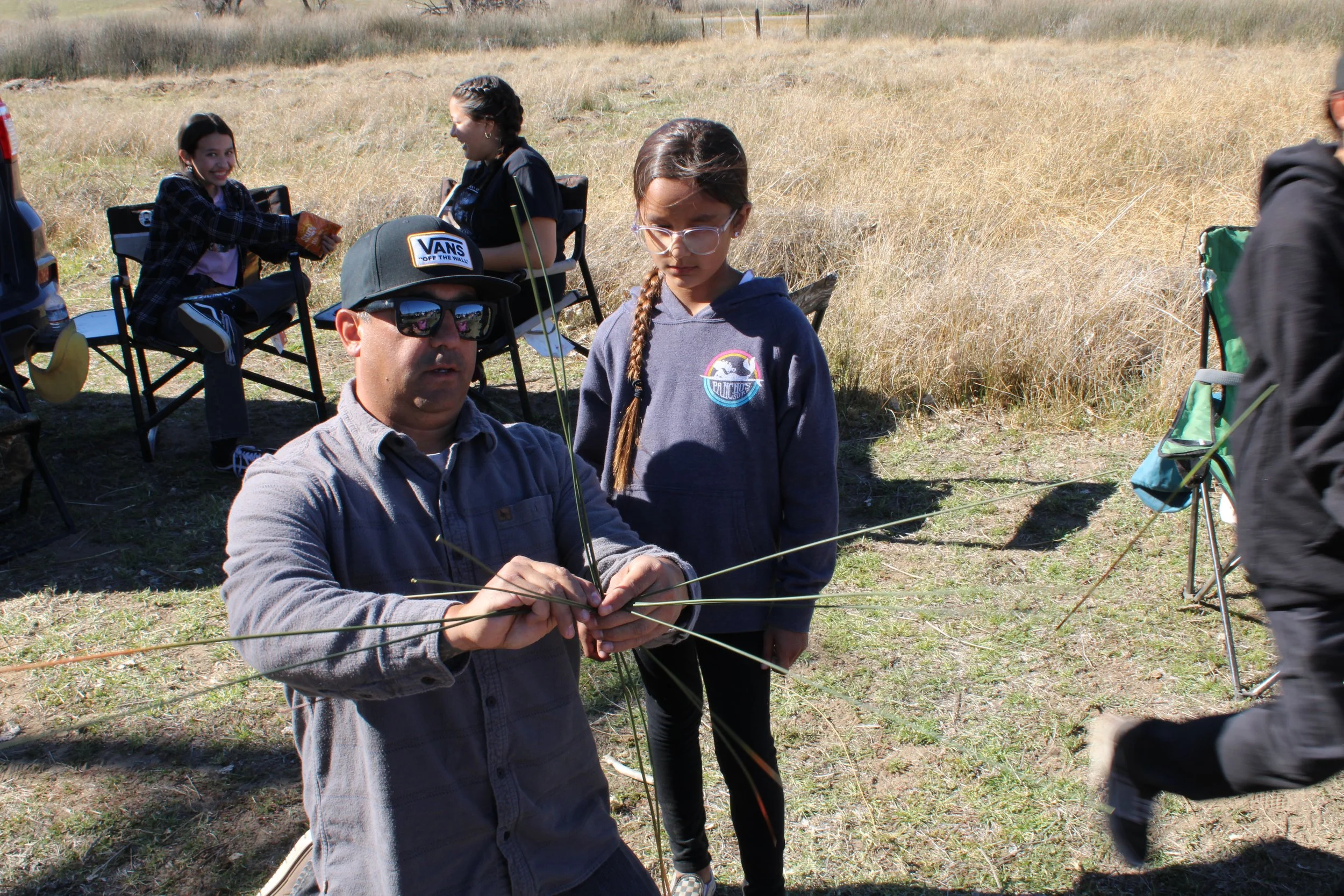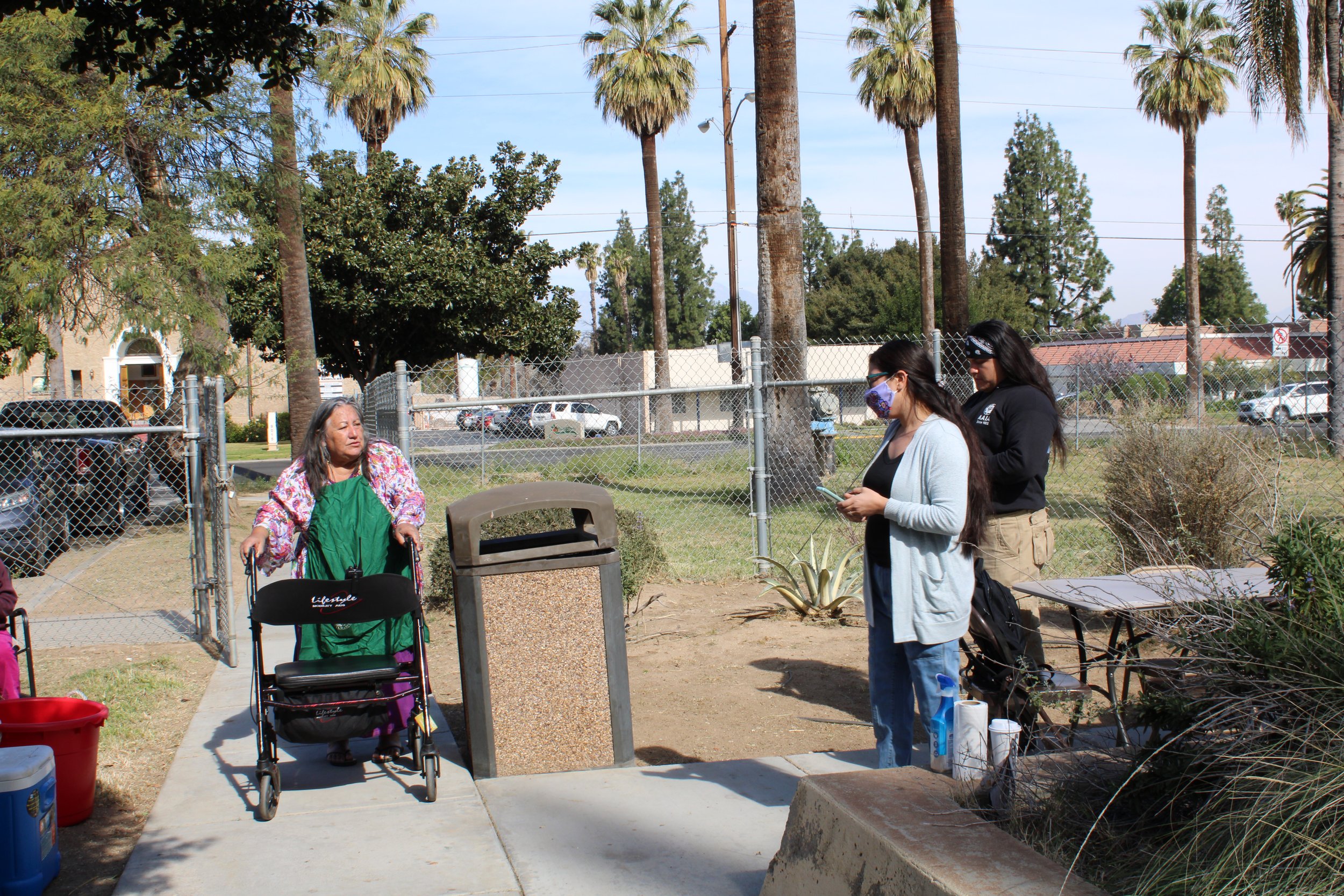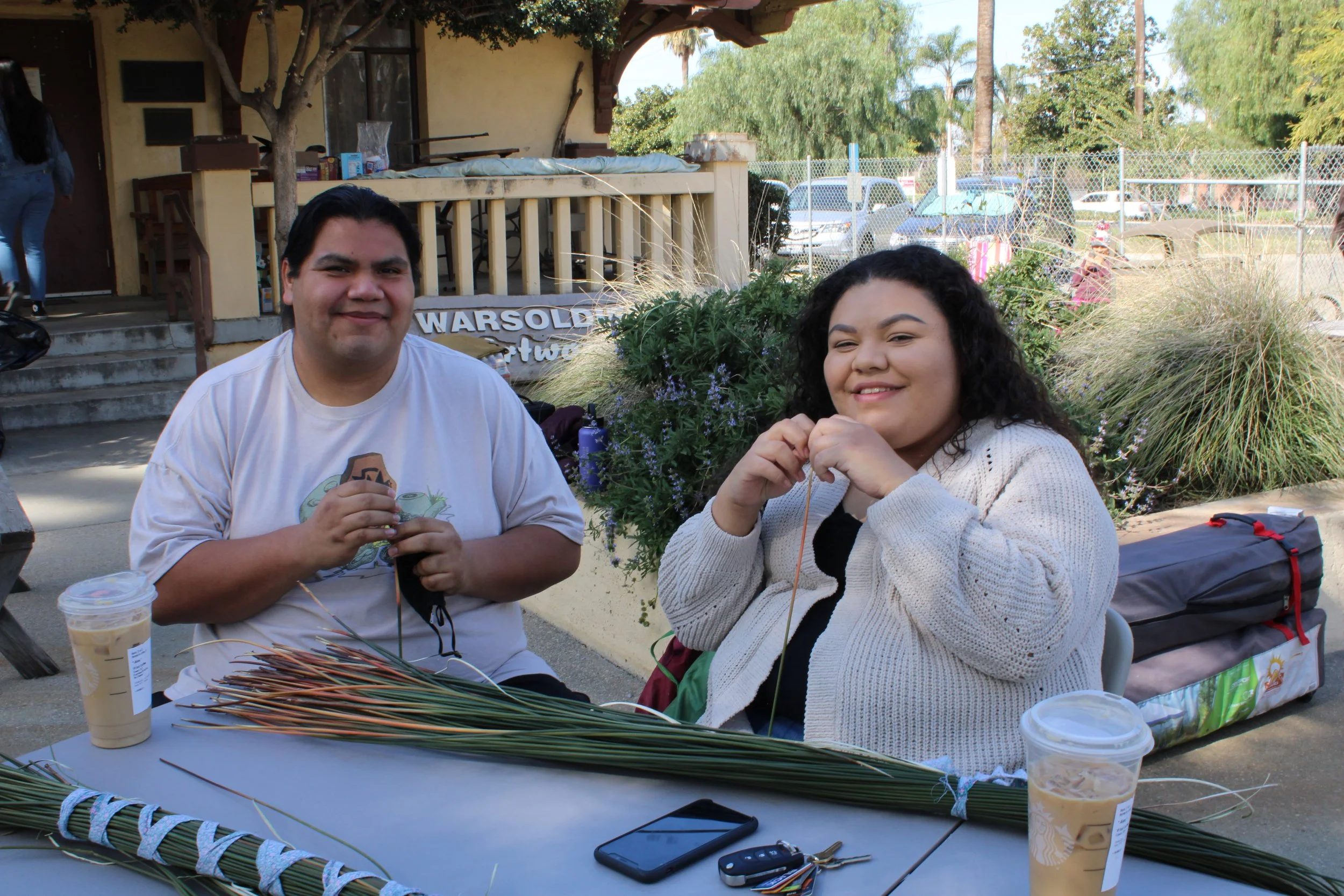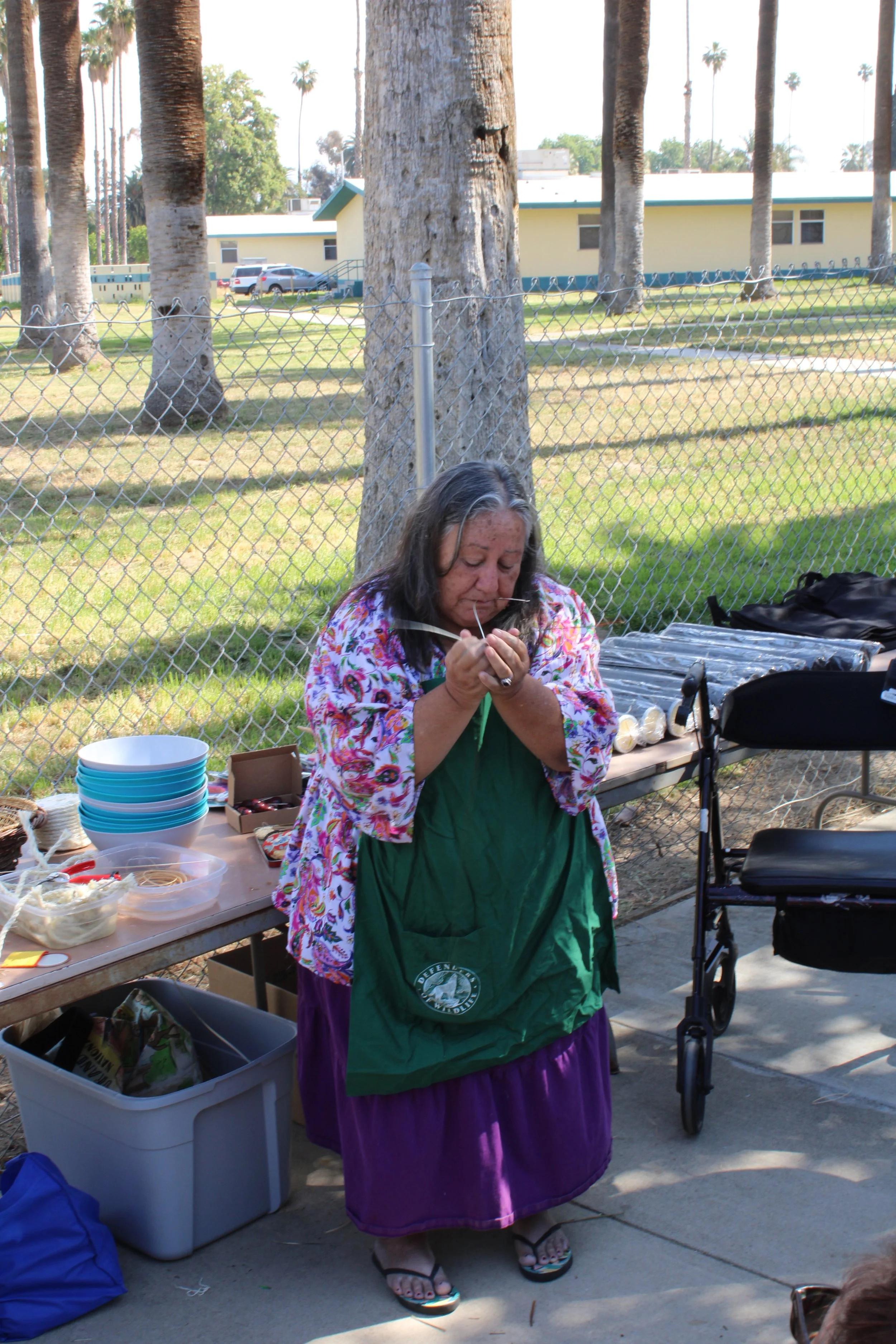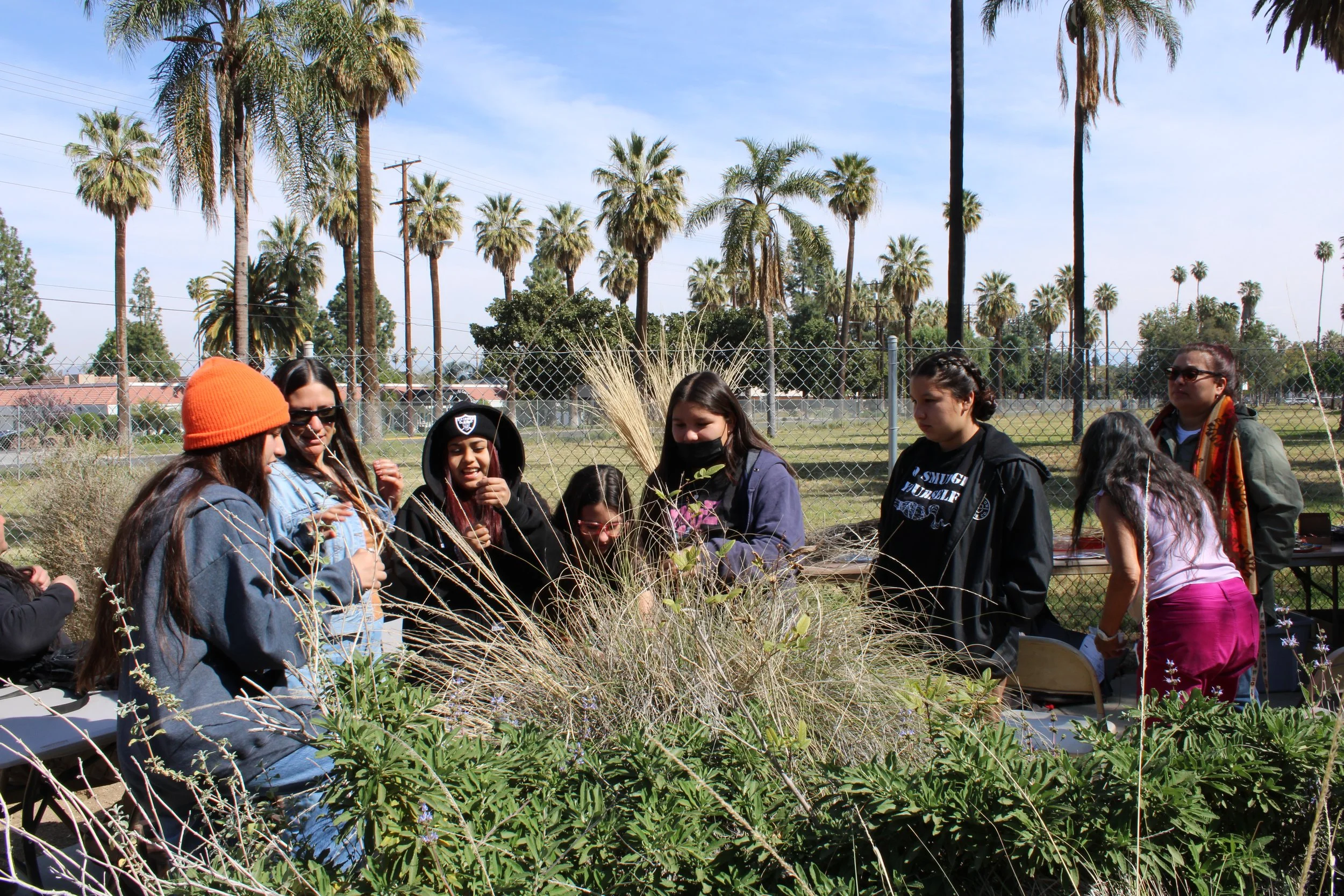SAN BERNARDINO Weaving Stories of the Land
A collaboration with Daisy Ocampo, the Sherman Indian Museum, and the Cahuilla Band of Indians
Southern California tribal communities viewed the pandemic as a symptom of the disconnection between people, land and other-than-human beings. Disconnections are often exacerbated by layers of existing historical trauma rooted in loss to Native languages, cultural practices, elders and connections to the land. This project allowed urban Native communities in San Bernardino, and Inland Empire at large, to reconnect to the land via southern California basketweaving. This was a weekend-long workshop where participants first met on the Cahuilla reservation to pick juncus and continued at the Sherman Indian Museum to prepare and create baskets. From the onset, it was clear that access to the land was difficult for urban families, and this was a new opportunity to foster community, healing and connection. This project helped ameliorate these varied forms of disconnection brought by histories of boarding school, urban relocation program and recently COVID. These land care practices, tied to Creation stories, invoked a new vision for relationality.
Religion in San Bernardino
Although it takes its name from an 1810 Spanish mission, San Bernardino’s religious history begins long before that time. Located in the San Bernardino Valley, the territory which is now encompassed by San Bernardino’s city borders has been traversed by communities such as the Serrano, Tongva, Mojave, Luiseño, Cahuilla Native American groups, and others. Colonial interest and presence in this area began in the latter half of the 18th century and picked up steam throughout the 1800s. Today, San Bernardino is one of the most vibrant and diverse cities in the United States, featuring significant Indigenous and migrant populations. The city features dozens of cultural festivals, a robust K-12 and higher education scene, and a rapid transit system for residents and visitors alike.
Photos from the Project

Suggested Readings & Resources
Continuity: Cahuilla Basket Weavers and their Legacies (2024 Exhibit at the Benton Museum of Art, Pomona College)
Daisy Ocampo, Where We Belong: Chemehuevi and Caxcan Preservation of Sacred Mountains (University of Arizona Press, 2023).
Ellen Pearlstein, Christian de Brer, Molly Gleeson, Allison Lewis, Steven Pickman, Özge Gençay-Üstün, and Liz Werden, “An Examination of Plant Elements Used for Cahuilla Baskets from Southern California,” Journal of the American Institute for Conservation 47.3 (2008): 183-200.
Cutcha Risling Baldy, We Are Dancing for You : Native Feminisms and the Revitalization of Women’s Coming-of-Age Ceremonies (Seattle: University of Washington Press, 2018).
Clifford E. Trafzer, Matthew Sakiestewa Gilbert, and Lorene Sisquoc, eds., The Indian School on Magnolia Avenue : Voices and Images from Sherman Institute (Corvallis: Oregon State University Press, 2012).
We Are Birds (2015 Documentary Film)
We Are Still Here (2007 Documentary Film)
Kevin Whalen, Native Students at Work : American Indian Labor and Sherman Institute’s Outing Program, 1900-1945 (Seattle: University of Washington Press, 2016).
Meet the Team
Daisy Ocampo
Daisy Ocampo (Caxcan, or Caz’ Ahmo, Indigenous Nation of Zacatecas, Mexico) is an Assistant Professor of History at CSU San Bernardino. Her research in Native and Public History informs her work with museum exhibits, historical preservation projects, and community-based archives. Her research integrates critical race theory, decolonial praxis of tribal sovereignty, and community traditions to create a new direction of inclusivity in Public History that visibilizes Indigenous people, voices and community narratives.
-
Lorene Sisquoc
Lorene Sisquoc is curator of the Sherman Indian Museum, has taught basket-making and Native Plant Uses and Material Culture/Traditions at the Sherman Indian High School and throughout Southern California for many years. Sisquoc is a descendant of the Mountain Cahuilla and a member of the Fort Sill Apache tribe.
-
Amanda Wixon
Amanda Wixon is a Ph.D, Candidate at UC Riverside and an Associate Curator at the Autry Museum. Her research examines carceral aspects within Sherman Institute, the last of the federal off-reservation boarding schools, located in Riverside, California. She is an enrolled tribal member of the Chickasaw Nation in Oklahoma.
-
Blossom Maciel
Blossom Maciel is an Apache and Cahuilla culinary professional. Her services include preparing meals using local Native foods such as mesquite, pinon, chia etc. She provides educational information on the importance of decolonization health and foodways.
-
Cindi Alvitre
Cindi Alvitre is a Tongva descendant of the Moompetam (Salt Water) Clan – the original people of Los Angeles and the southern Channel Islands – she teaches American Indian Studies at Cal State Long Beach.Description goes here
-
Angela Bogner
Angela Bogner is Cahuilla and responsible for the caretaking of the juncus patch on the Cahuilla reservation. She is in the healthcare profession and incorporates basket weaving as medicine.
-
Malinalli Diaz
Malinalli Diaz is a nahua student and is part of the Las Fotos Project, whose mission is to elevate the voices of teenage girls & gender-expansive youth from communities of color through photography and mentoring.
-
Jaime Castro
Jaime Castro is Apache and a student at CSU San Bernardino. He is a Mellon Mays Undergraduate Fellow examining the impact of COVID on tribal communities.
-
Christopher Nuñez
Christopher Nuñez is a videographer, producer and director. He teaches at Riverside Community College.

Statement of Gratitude
Thank you to the Cahuilla Band of Indians who welcomed us to their reservation.
Our Good Life Project was seeded by Harold Morales, Rupa Pillai, and Kayla Wheeler with support from Amrita Bhandari, Ariel Mejia, Sierra Lawson, Fatima Bamba and many others from the Center for Religion and Cities’ collective.
The work is supported through generous funding from Morgan State University and the Henry Luce Foundation.
The county of San Bernardino is located on the traditional and unceded lands of the Serrano, the Cahuilla Band of Indians and others, who continue to live in the city. The CRC invites you to join us to learn about the Indigenous history of and contemporary context of Native groups in the lands we live and work on.




